| |
The Gran
Sasso offers a myriad of sites by the
breathtaking beauty, who deserve to be visited.
|
ROCCA CALASCIO CASTLE
With nearly 1500
meters of altitude is the highest castle
in Italy and among the highest in Europe,
as well as one of the oldest inhabited by
humans in Abruzzi. It 'one of the
fortifications that blends more with the
impervious rocky land surrounding it,
built entirely of white limestone and
placed on both sides of one ridge to the
valley of the domain Tirino and plain
Navelli. From here you can enjoy a
spectacular view of Campo Imperatore and
the Gran Sasso. Its main role was to
control the most important route
tratturale aquilano passing beneath its
walls. The small size made it suitable
only Rocca Calascio for military purposes
and to accommodate a small garrison, which
is why his foot developed the village,
soon also surrounded by walls to defend
popoalzione from raids by pirates and
invaders, and by is increasingly affecting
even the most remote valleys.
La Rocca is connected to the village from
a wooden bridge, a long retractable. In
1703 a disastrous earthquake damaged the
castle and the town of Rocca Calascio:
they were just rebuilt the houses in the
lower part and many people preferred to
move in the underlying Calascio, country
of recent origin.
The upper part is inhabited by the
last'50s, although lately some house has
been restored in one of these we can find
a refuge-restaurant-hostel.
The castle was the subject of restoration
and consolidation, so that today it is
fully and freely available. Many of you
will remember as the castle ruins in the
movie Lady Hawke. Ultimately, it is a
place to visit at all.
|
Rocca Calascio
Castle
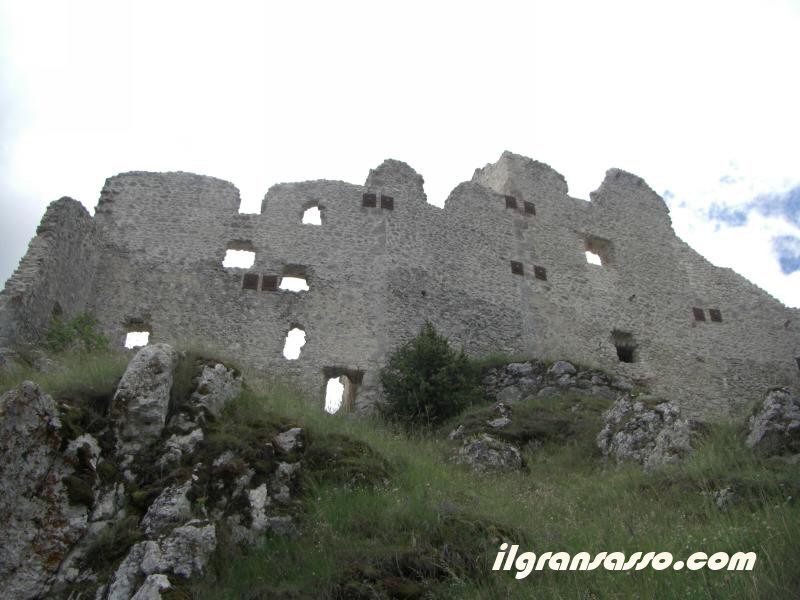
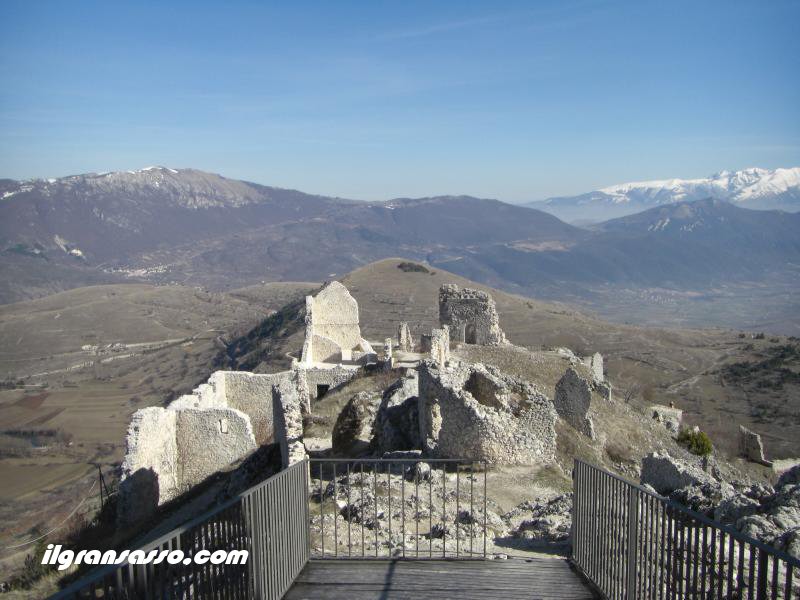
|
|
RIGOPIANO
Rigopiano, hamlet
of Farindola, is a major tourist center,
the starting point for interesting and
delightful excursions, caving and
climbing, rich in facilities and sports.
E''una conca Karstic of exceptional beauty
in the heart of the Gran Sasso massif, at
approximately 1200 meters above sea level,
crossed by the River Rigo and located at
the foot of the mountains S. Vito (m.
1952), Siella (m. 2000), Cup (m. 1800) and
Alb (m. 2564).
The mountain, which is entirely included
within the National Park of Gran Sasso and
Monti della Laga, is characterized by vast
pastures and forests to beech forest that
offered the opportunity to pass up to the
present day civic uses of pasture and
firewood. Not infrequently, you can see
the animals grazing.
Well organized is the heritage receptive.
The area equipped for picnic benches with
wooden covers fire ignition points
entirely feasible in stone and playground
for children. The rest of the summer are
made of wood perfectly integrated into the
territory and remain open until late at
night to enjoy the cool evenings during
the typical local products (pecorino
farindolese, arrosticini, etc..).
Great for picnics immersed in nature.
|
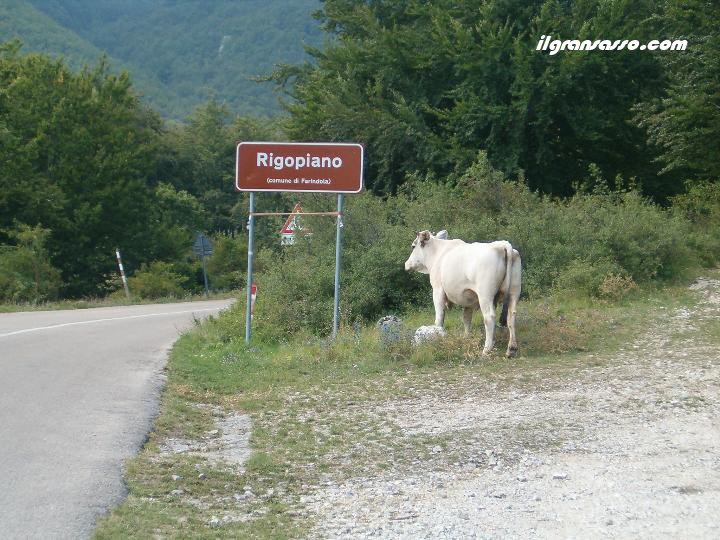
Rigopiano
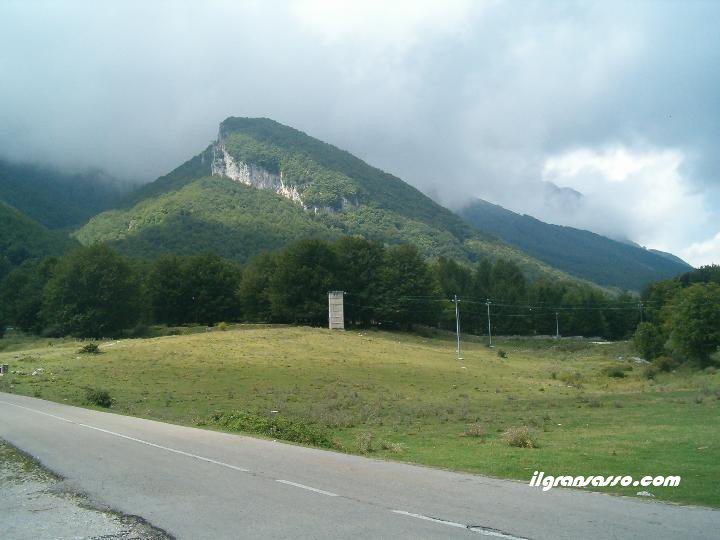
|
|
PRATI DI TIVO
Prati di Tivo is a
tourist resort on the mountain slopes of
Gran Sasso, in the municipality of
Pietracamela.
The name seems to come from the
backward-term grassland meadows that late
date its position in high altitude (1450
m).
It is located 6 km from the center of
Pietracamela and 40 km from Teramo.
Abundant accommodation consists of many
hotels.
A Prati di Tivo are active ski downhill
skiing and ski lifts in two modern lifts,
a quad and a two-seater, which arrives in
1800. There is still the old seggovia
single seater that goes to 2050 meters
dell'Arapietra. All installations are
located at the foot of the northern side
of the Little Horn. There is also a track
for cross country skiing.
In summer the town Prati di Tivo offers
several options for hiking and climbing
with different levels of commitment: from
simple walks in the woods on a difficult
rock climbing.
Through the Arno Valley and Rio Campo
Pericoli is possible to make a crossing
and reach Campo Imperatore.
Imposing and majestic Gran Sasso is seen
by Meadows. You leave 'breathless!
|
Prati di Tivo
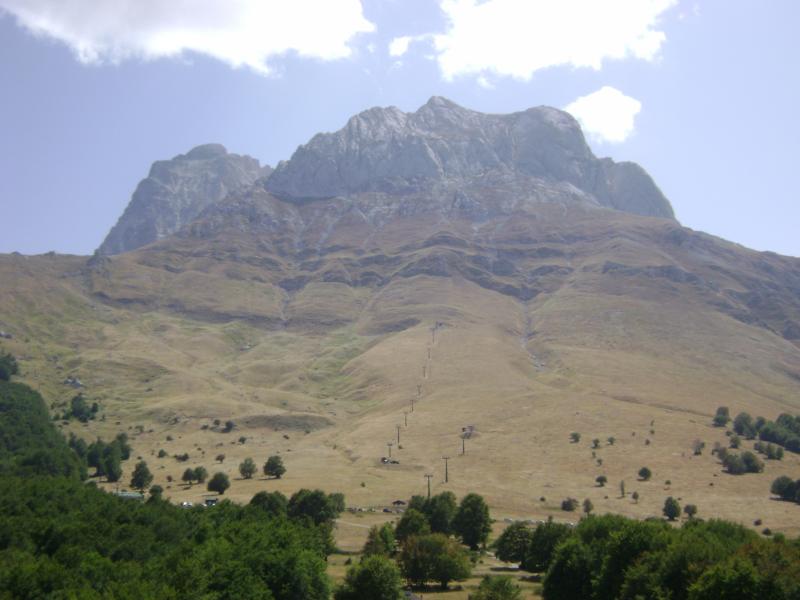

|
|
TIRINO RIVER
Beautiful stretch
of water from the Gran Sasso, the aquifer
system of Campo Imperatore.
After a karst of 25 km, out of a valley.
The water flow rate is constant throughout
the year (6000 l / sec) at a temperature
of 11 °, no tributaries, the waters are
always clear. Tirino River is one of most
rivers' cleanest in Europe.
Downstream, feeds three sources, Capo
d'Acqua, Presciano and the small lake
below Capestrano but the largest inflow is
from Capo d'Acqua being the other two
almost firm. The name derives from the
greek "crushed" and means precisely
threefold source, the valley in which
flows are also called Tritan valley or
valley chopped.
The river is home to trout (including
fario) and very few crabs. Herons,
gallinelle river otters and represent the
fauna. Characteristic of this river are
the cinerini willow and white willow, but
the oaks and juniper red.
A wonderful stretch of water!
|
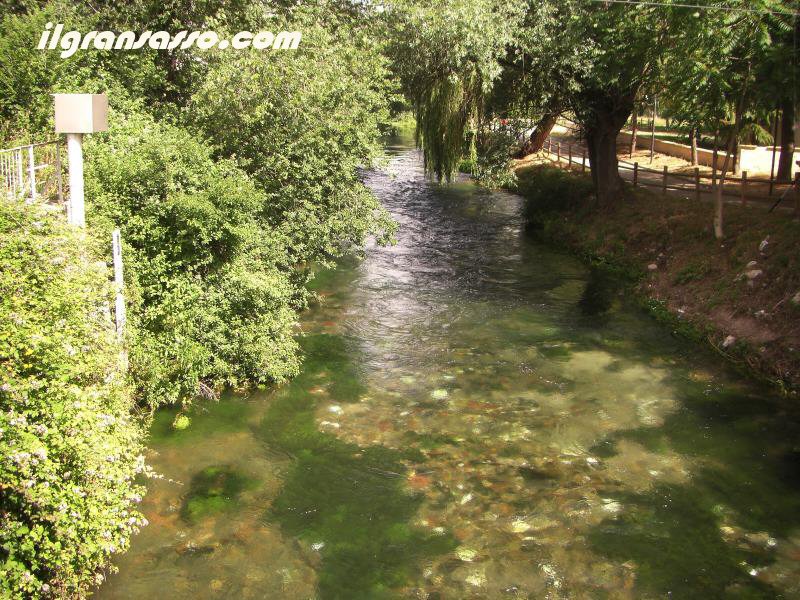
Il Fiume Tirino
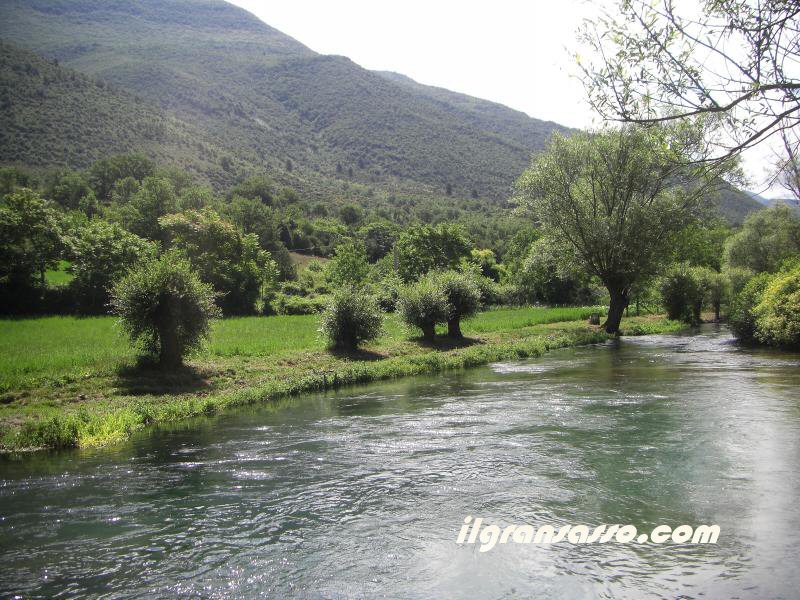
|
|
PROVINCIAL
ROAD RIGOPIANO-CASTELLI
The provincial road
Rigopiano-Castelli is a stretch of road
that connects the side of the Gran Sasso
Pescara, Teramo to that. It stretches for
about 20km. Starting from Rigopiano falls
after bends and breathtaking views in the
town of Castelli. The foothills, along lla
dense beech forest characteristic of these
places, at the foot of Monte Alb.
We expect impressive views of the east and
north walls of Monte Alb. After about 10km
journey towards Castelli, your eyes open
'take to the mountains, and Brancastello
Corno Grande. Enjoy views ranging from the
sea to the hill until you arrive at
2912mt.
|
Along the road
Rigopiano - Castelli
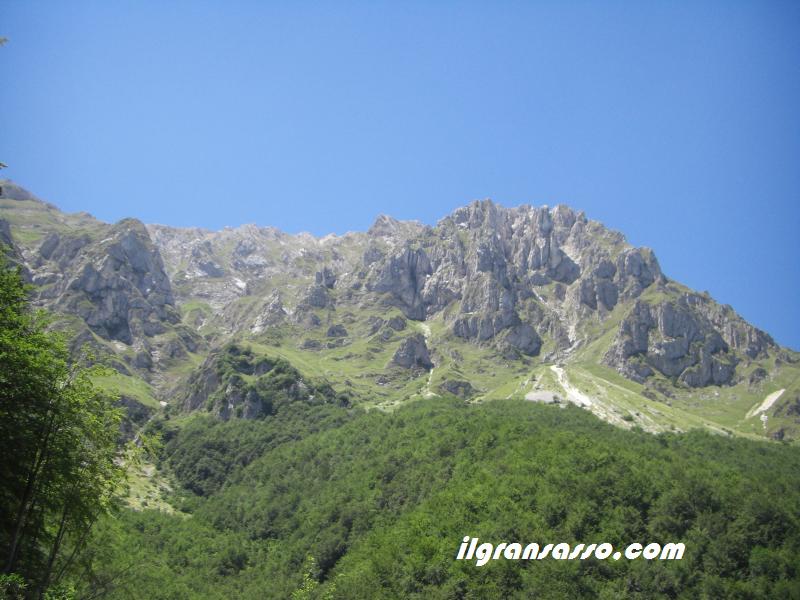
|
|
RIVER
WATERFALLS RUZZO
The river is born on Mount Ruzza take a
2560mt. Right tributary of the river
Mavone.
Around Pretaro, above the shrine of St.
Gabriel of Our Lady of the stream forms
a waterfall. The waterfalls can be
reached on foot for a path of about 300
meters in which a sudden stop and we
must continue along the stones of the
nearby torrente.Proprio there is a
chalet-restaurant.
Excellent idea for a beautiful day
surrounded by nature.
Near Pretaro, you can 'visit The
Hermitage of Fra' Nicholas, better known
as Cave Frattagrande. This is a tiny
church almost embedded in the rock,
built by the hermit of the Gran Sasso,
who spent his days in meditation. Among
Torretta Nicola, was born in Picciano
(PE) in 1803, and since 1825 he
abandoned the wealthy family home and a
life that did not reflect all the
principles of charity, humility,
brotherhood, to withdraw from the ruins
of the Castello di Pagliara.
|
Up: RIVER
WATERFALLS RUZZO
Down: Hermitage of
Friar Nicola
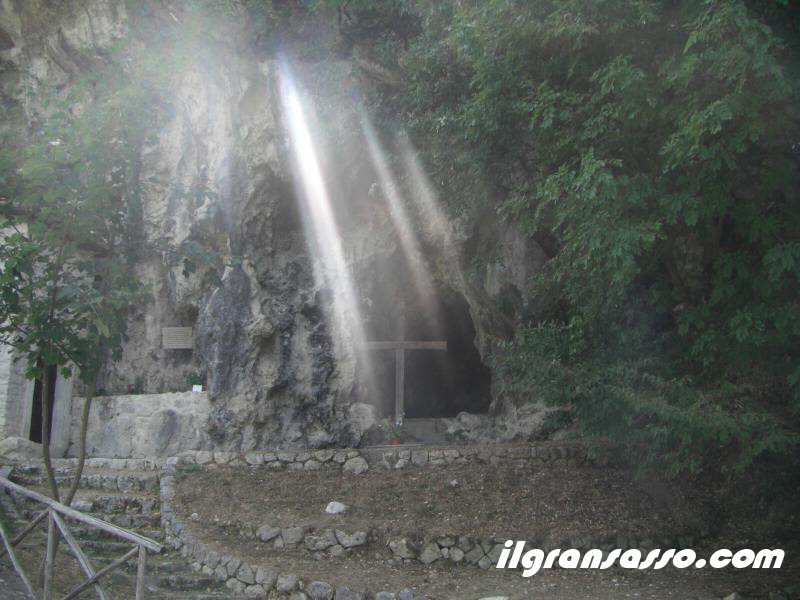
|
CAMPO IMPERATORE OBSERVATORY
The Observatory of
Campo Imperatore is now an observing
station of the Astronomical Observatory of
Rome, situated near the Gran Sasso
d'Italia (AQ) at about 2200 m of altitude.
The station, as a project, born in the
50s, and through a special financing sees
its completion a few years later. In the
early 60's opened the first telescope, one
by 60/90/180 cm Schmidt, now equipped with
a CCD imager with wide field and has a
control system and pointing high
automation. In the'70s, finally, a
broadening of the structure, building a
new dome that now houses the infrared
telescope AZT-24 by 1.1 m. From this
observatory, the astronomers can still
enjoy one of the darkest skies of Italy
like the alpine village and perhaps
exceeded only by a few mountain innermost
of Sardinia.
|
CAMPO IMPERATORE
OBSERVATORY
|
|
CAMPO IMPERATORE HOTEL
On 3 September
1943, in room 201 (now 220) of the
existing hotel at Campo Imperatore, Benito
Mussolini was imprisoned.
Today, the facility has a capacity of 100
beds with 200-250 covered restaurant,
tavern Abruzzo, reading rooms and lounge,
bar.
|
Campo Imperatore
Hotel, where stayed Benito Mussolini
|
|
FORCA DI PENNE
Located a few
miles from the center of Brittoli and
Cannatina, the point of Forca di Penne is
characterized dala its squat tower of
medieval origin that can be seen for miles
around. Here converge the roads that go to
Brittoli Civitaquana and, on the Pescara
and Ofena Capestrano and, on the aquilano.
Good base for excursions to the mountain
peak and mountain Scarafano. Forca di
Penne is one of the most interesting in
Abruzzo for ornithologists, it is worth
noting that live here permanently copies
of the most beautiful species of birds of
prey in the region as the eagle, peregrine
falcon, kestrel, sparrowhawk and the
buzzard. I am not at all rare to Allocco,
the barbagianni the codirosso and green
woodpecker.
|
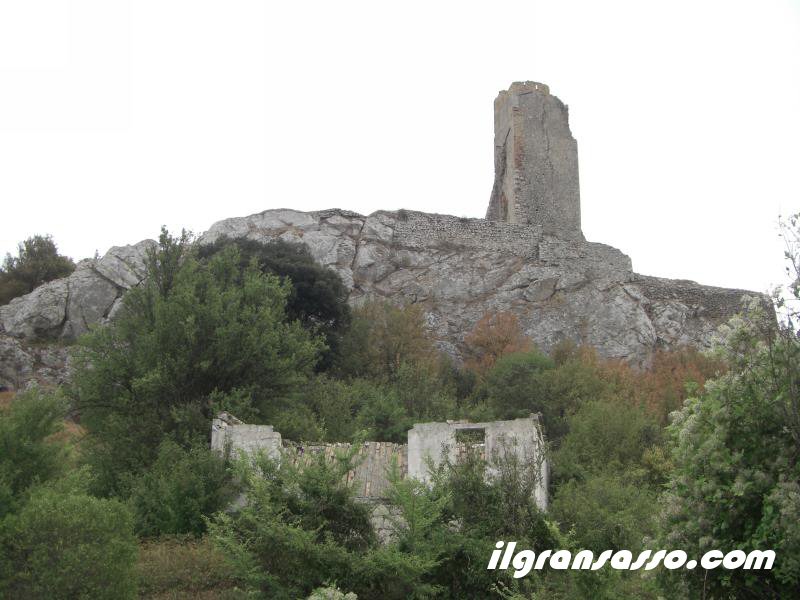
Tower of Forca di Penne
|
| CLIMBING OF VILLA
CELIERA
Pass the center of
Villa Celiera, we arrive, after a few
kilometers facts bends and climbs in
places' The Climbing.
Here you will find a residential area,
very welcoming, which provides a good base
for excursions to the Villa di Merletti
Celiera, Mount Bertona and near the
plateau Voltigno.
|
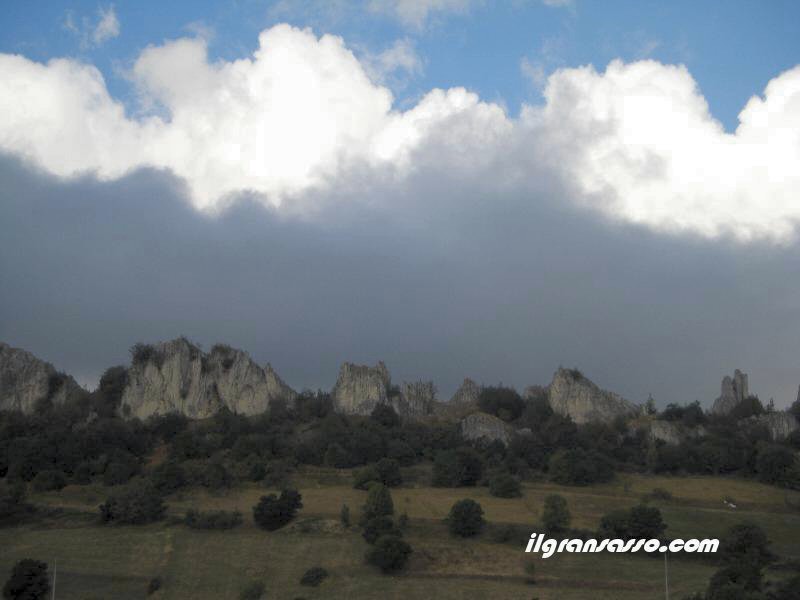
CLIMBING OF VILLA
CELIERA
|
|
CASTELLI CITY OF CERAMICS
Located at the
foot of Mount Camiciab, in the Parco del
Gran Sasso, the town of Castelli is a
village surrounded by an agricultural
landscape and clay gullies.
Is the presence of argilla, along with
that of water (for dough) and wood (for
furnaces), who led a community of
Benedictine monks, maybe nine or ten
centuries ago, to start the production of
ceramics. Since then the country has lived
ceramic, including the'600 and'700, when
the great masters have made an art of this
product really refined, even in the courts
of kings.
Castelli in addition to the museum worth
visiting the church of San Donato, known
as the Sistine Chapel of Maiolica. The
whole time it is entirely made of painted
pottery, (see photo opposite). The ceiling
of this new church, painted between 1615
and 1617, is unique both in Italy and in
the rest of Italy.
The crib is made up of Monumental 54-size
statues and filed within the 'Institute of
Art where you can admire the collection of
international pottery' s modern art.
|
Up: S.Donato
Church in Castelli
|
|
SLEEPING BEAUTY
If you are close to Pescara, Montesilvano
and other surrounding areas, our gaze
towards the Gran Sasso chain will show 'a
sleeping princess.
You can clearly distinguish the features
of the face (Big Horn), the front (Corno
Piccolo), the body (the mountains and take
Camicia).
If observed at sunset, in the days with
clear sky, is something exceptional!
.
|
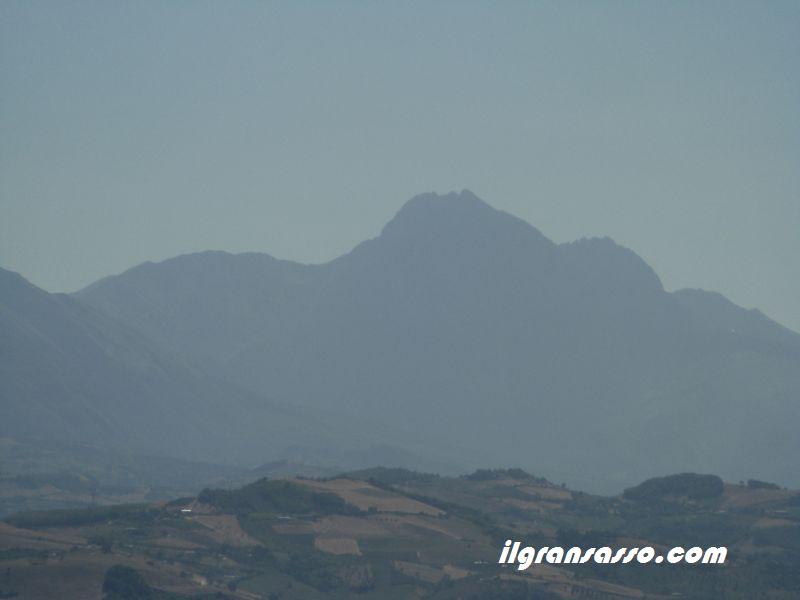
SLEEPING BEAUTY
- Gran Sasso
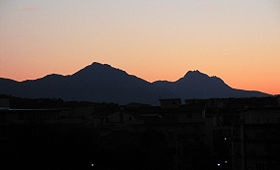
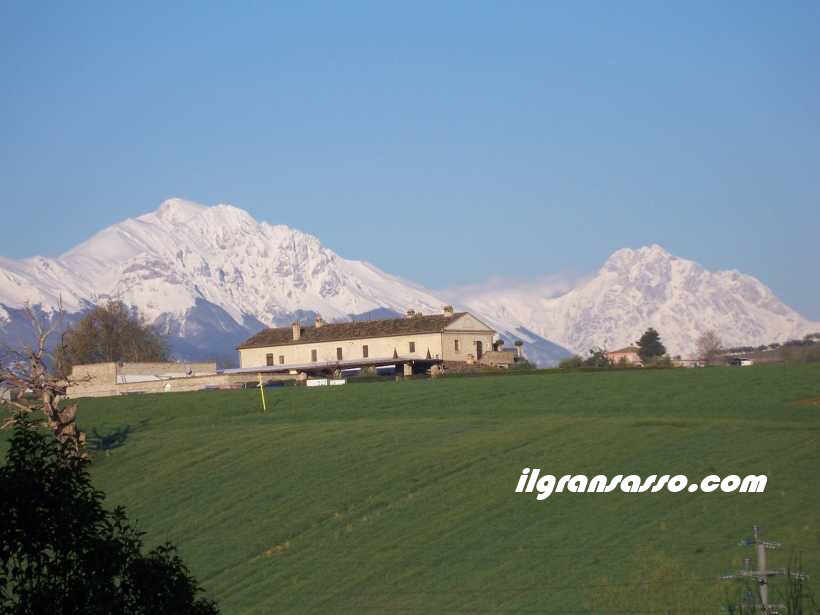
|
|
CASTEL DEL MONTE
Evocative country from unmistakable
peculiarities medieval Castel del Monte is
located inside the National Park of Gran
Sasso and the constant goal of nature
lovers. For centuries it has been an
important center for transhumance and
still is known for its cheeses. In the
sixteenth century Castel del Monte has
suffered destruction at the hands of the
army led by Muzio aquilano Colonna.
Every year on 17 August, renewed the
ancient rite de re seven baskets, "or the
Night of the Witches, magically recalled
with a theatrical show that takes place
along the roads of the country in which
the viewer, crossing the streets of the
village , is catapulted into a world
suspended midway between tradition and
imagination.
Beautiful village, to visit absolutely!
|

Castel del Monte
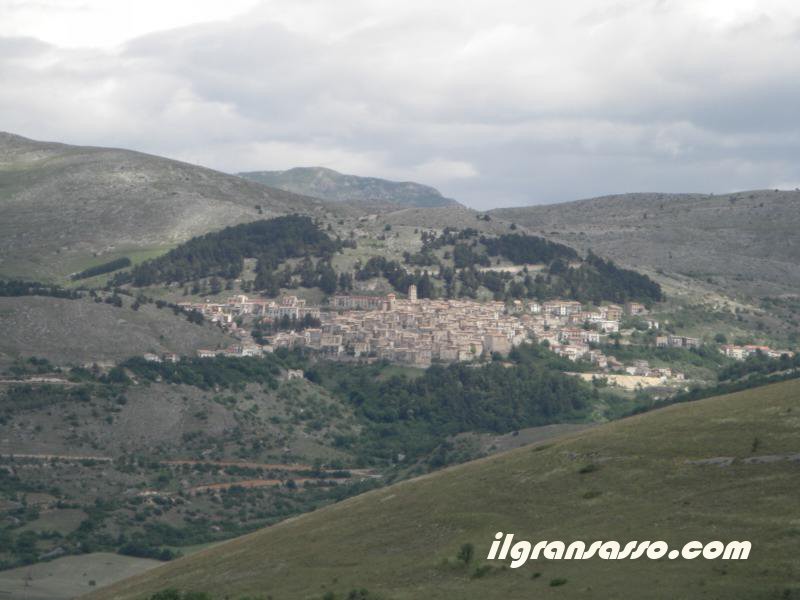
|
|
PIANA DEL VOLTIGNO
Along with Val d'Angri, is a nature
reserve established by the Regional Lead
LR 28 September 1989, n.87, included in
the Parco Nazionale Gran Sasso and Monti
della Laga. E 'on the territory of two
provinces, L'Aquila and Pescara, but a
large part lies in the territory of Nora
Carpineto and a small part belongs to
Ofena. Located on the eastern side of
Gran Sasso and is a karst mountainous
basin.
Is 'characterized by large beech and
"dolines" forms that are typical of
karst landscape that occur as a circular
depression in which water is absorbed
and channeled underground in the
streets. In fact, Voltigno in winter,
falling snow and a lot of this, when it
melts in the spring form many small
karst lakes, which then disappear in
summer. It remains only a lake called
Lake wallpaper, that popular belief has
it that the bottom and has not even
going to lead directly to the sea. E
'wildlife area of the Abruzzo chamois,
are also buzzards, peregrine falcons,
deer, the Apennine wolf and wild cat,
once there was even the bear.
|
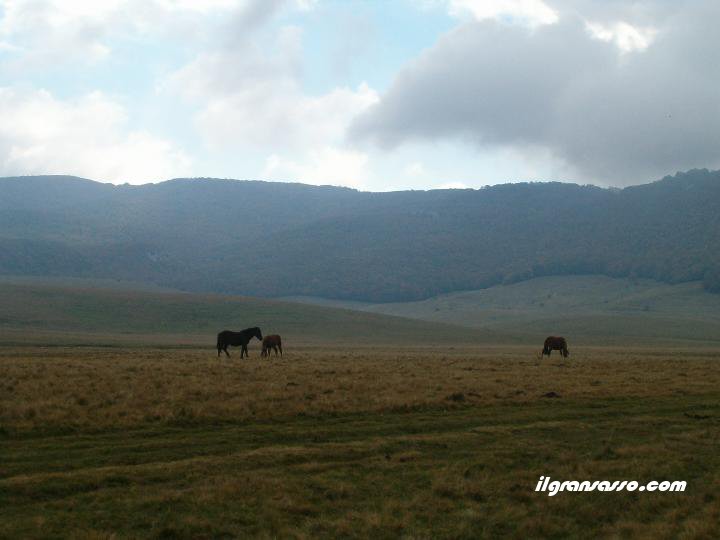
Il Voltigno
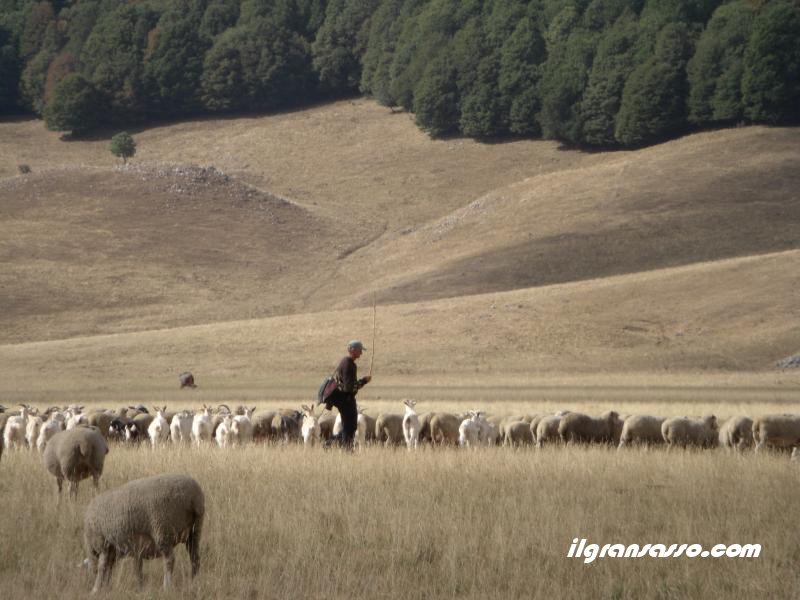
|
|
FONTE VETICA
The piana of Fonte
Vetica is the most east part of Campo
Imperatore.
Vetica source is surrounded by beautiful
mountains, among which the Monte shirt, is
the highest of the coastal watersheds of
the Gran Sasso. On Campo Imperatore
(south), with soft bumps down, apart from
a number of paretine below the summit,
overlooking the pine forest and the plain
of Vetica Source. The forest consists of
spruce and white from where numerous paths
marked with signs for wonderful hiking.
From here you can reach Monte Siella,
Mount and Mount Tremoggia shirt and take
the mount.
Characteristic of the place are the famous
"braceri" where you can enjoy the
excellent meat (cooked by you) and local
cheeses at the TOP, as the marches of
Castel del Monte.
Also remember the many films and
commercials shot in Source Vetica and
Campo Imperatore including "They called
him Trinity" and "... continued to call
Trinity" with Bud Spencer and Terence
Hill.
|
|
|
VITELLO D'ORO WATERFALLS
Tavo River, was
born from the source "Pisciarelli" in
the valley of Angora.
Paths several kilometers, the river
reaches the valley of Angri and plunges
into a huge cave, called the Mouth of
hell, then lead to another valley where
it forms a spectacular waterfall 28
meters high, the waterfall of the Golden
Calf , the source of the most important
of the southern group of the Gran Sasso.
Note the contrast between the rocky
slopes with little vegetation or bare
and hollow that appears green tree grown
spontaneously.
|
VITELLO D'ORO
WATERFALLS
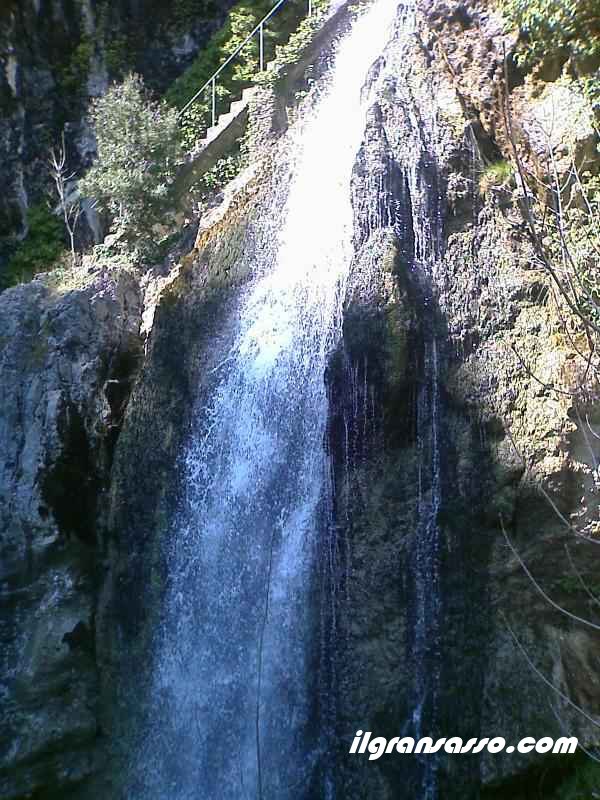
|
|
The
monument to the tragedy of Fonte Vetica
Campo Imperatore
Like all mountains
high, complex and very busy, the Gran
Sasso has had its share of tragedies. On
ridges and on the streets it's easy to
bump into commemorative plaques.
Very sad is the tragedy that occurred on
the slopes of Mount Bolz, not far from
Source Vetica territory ofenese.
Here, on 13 October 1919 the pastor of
Pupi Nunzio Roio died with his daughter
surprised by a blizzard of snow, his wife
in a desperate attempt to help them go
insane and die from the pain. The sculptor
has given Vicentino Michetti marble in
this tragedy to honor those who have died
in these mountains.
In 2006, reckless hands rubbed the work
that now needs to be repaired. Are you
planning to move it somewhere more secure
and less hidden.
|
The monument
to the tragedy of Fonte Vetica Campo
Imperatore
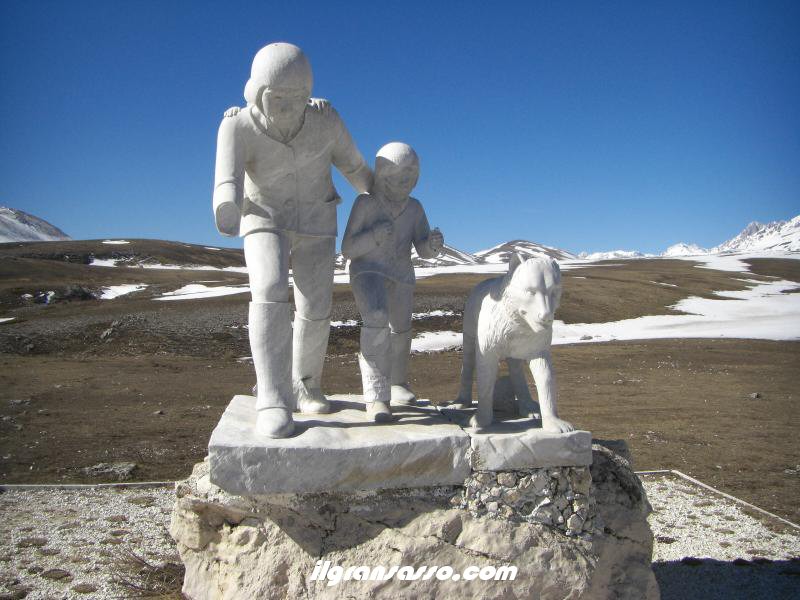
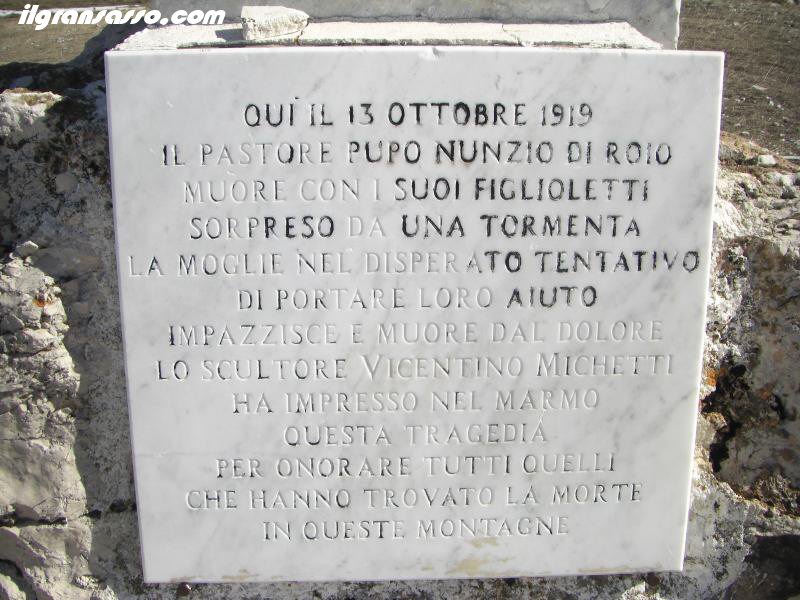
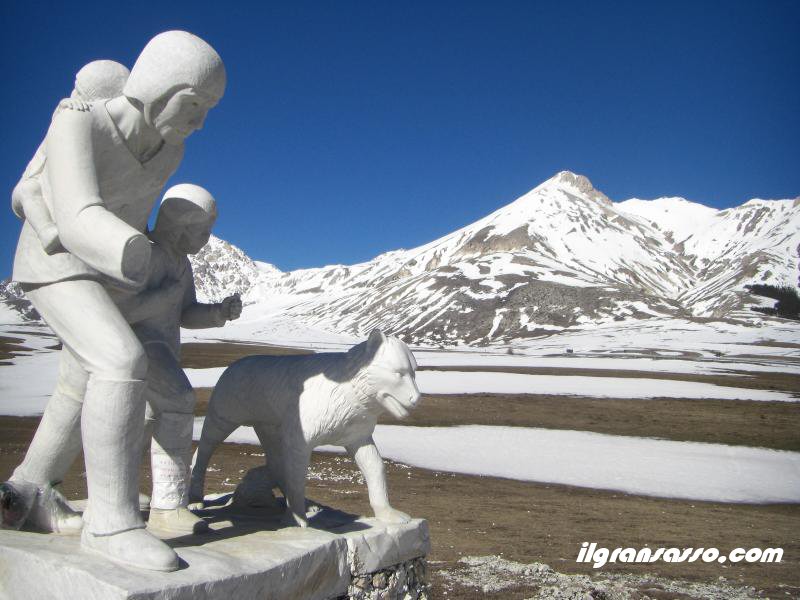
|
|
SANTA MARIA DELLA PIETA' CHURCH
A few meters from
the Castle of Rocca Calascio is the
picturesque church of St. Maria della
Pietą (XVI sec.).
The elegant little temple, built according
to tradition on a pre-existing newsstand
votive, was built at the end of the
sixteenth century, on octagonal. At the
suggestion of the central, which recalls
similar bodies built in Italy from the
fourteenth century, it combines the
exceptional landscape value of the site,
the church is placed close to the
abandoned village of Rocca Calascio, a
domain of the underlying plain Navelli,
traveled from Tratturo. Interior space,
organized by a system of Tuscan pilasters
and covered with a dome eight segments, is
in severe forms sixteenth, one of the
external facade, with a general
disorganicitą, it puts a building used as
a sacristy.
The oratory is one of the stages of a
conventional devotional route.
|
|
|
SANCTUARY
OF SAN GABRIELE dell'Addolorata A ISOLA
DEL GRAN SASSO (TE)
The Shrine of St.
Gabriel of Our Lady of the Abruzzo region
is a sanctuary, located at the foot of
Gran Sasso, in the town of Isola del Gran
Sasso d'Italia, in the province of Teramo.
There are 4 main structures: the convent
in which there is the seat of passion, the
old church where he died in St. Gabriel of
Our Lady of Sorrows (see photo opposite),
the new church in reinforced concrete and
steel, which is usually open on Sundays to
accommodate the large number of pilgrims,
and the headquarters of Eco San Gabriel,
the monthly magazine related to the
sanctuary.
In the old church, this is an interesting
museum that collects testimonies of so
many faithful, the miracles of San
Gabriel.
St. Gabriel of Our Lady of Sorrows is the
patron saint of Abruzzo. The Shrine of St.
Gabriel of Our Lady of Sorrows is a
pilgrimage destination for a very dear
young people, two key appointments, one in
March, a hundred days from the state to
get the diploma of secondary school, where
thousands dall'Abruzzo of students coming
from Italy and come to the shrine to pray
for a successful outcome of the
examination, and in which the pens are
blessed. L 'in the other Sunday of August,
which formed a tent in which young people
(but not so young) we camped for five
days, giving life to a religious meeting.
Among the famous visitors to the shrine,
Pope John Paul II and the then Prefect of
the Congregation for the Doctrine of the
Faith Joseph Ratzinger. The memory of
these visits is testimaoniato from the
photos on display in the modern sanctuary.
HOW TO GET TO THE SHRINE OF ST GABRIEL
* By car
The sanctuary is located three kilometers
from the A24 Roma-Teramo-L'Aquila.
From Rome: take the A24 towards Teramo,
exit at S. Gabriel, "and follow the signs
to the sanctuary, which is located 3 km.
From Bologna: take the A14 to the south,
exit at "Giulianova-Teramo, Teramo towards
here and take the A24 towards Aquila-Roma,
exit at St. Gabriel."
From Bari: take the A14 north, exit at
"Roseto degli Abruzzi", take the SS 150
towards Teramo Villa-Vomano after 15 km.
take the A24 towards Roma-L'Aquila, exit
at St. Gabriel. "
* By bus
From Rome there are several trips a day
Teramo bus through the ARPA, which depart
from the square of the Tiburtina Station
(weekdays: 6.15 / 8.10 / 12.25 / 14.25 /
15.15 / 18 / 19.30; holidays: 8.10 / 13.30
/ 18 / 19.30 / 22 / 22.15). Get off at
Teramo and take the bus to the sanctuary.
From Teramo (weekdays only) there is a bus
for shrine Yard S. Francis (ore 6.40;
8:15, 11, 12:35, 13:40, 14, 17, 19).
* By train
From Bologna and Bari (Lecce-Milan line):
Get off at station Giulianova, then take
the tram (runs every 30 minutes) in
Teramo, from here take the bus to the
sanctuary.
|
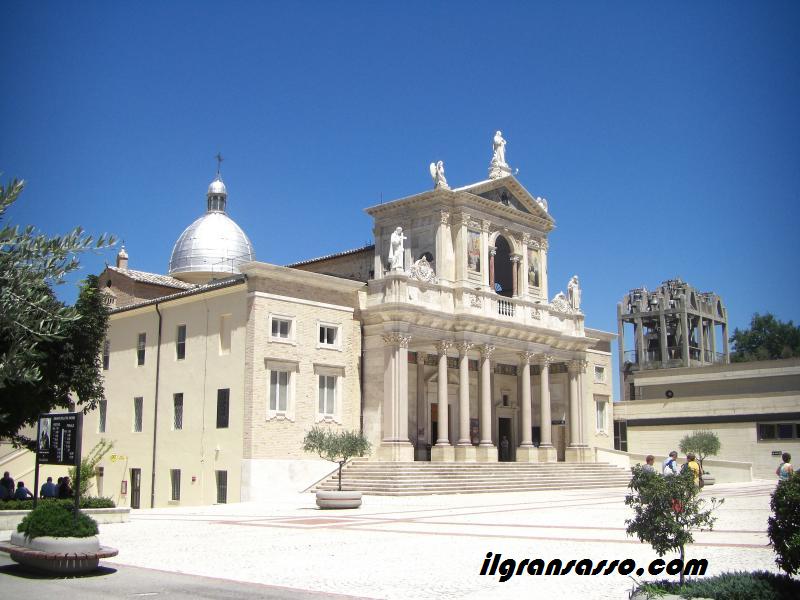
OLD CHURCH OF SAN GABRIELE
DELL'ADDOLORATA
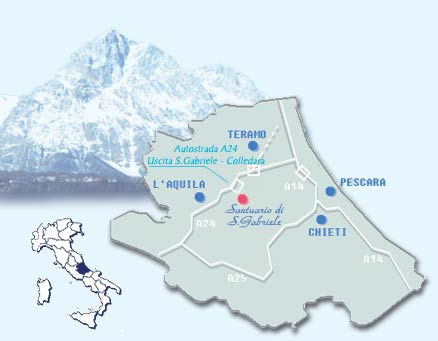
|
|
SANTO STEFANO DI SESSANIO (AQ)
Santo Stefano di
Sessanio is a town of 120 inhabitants of
the province of: is also part of the
mountain-Campo Imperatore plain of
Navelli. It's part of the Club dei Borghi
pił belli d'Italia.
The local history has always been linked
to the pastoral sin from the Middle Ages,
the village was connected to the nearby
Benedictine grancia Santa Maria a Monte,
called by the local population "Convento
di Casanova". The powerful monastic order
to supervise the main pastoral activities
throughout the district.
Attached to a long period to the Barony of
Carapelle, Santo Stefano di Sessanio of
family feud became De 'Medici of Florence
during the sixteenth century.
Incorporated in the Kingdom of Naples
during the sixteenth century, the country
continued to enjoy a flourishing economy,
until the advent of a profound social
crisis - economic, forcing the inhabitants
to emigration, has led to the almost total
depopulation and a inexorable decline in
the course of the twentieth century.
Only in recent years, the charm of the
village drew the attention of foreign
investors and local entrepreneurs, who
managed to give new life to the country,
now sought after tourist destination.
|
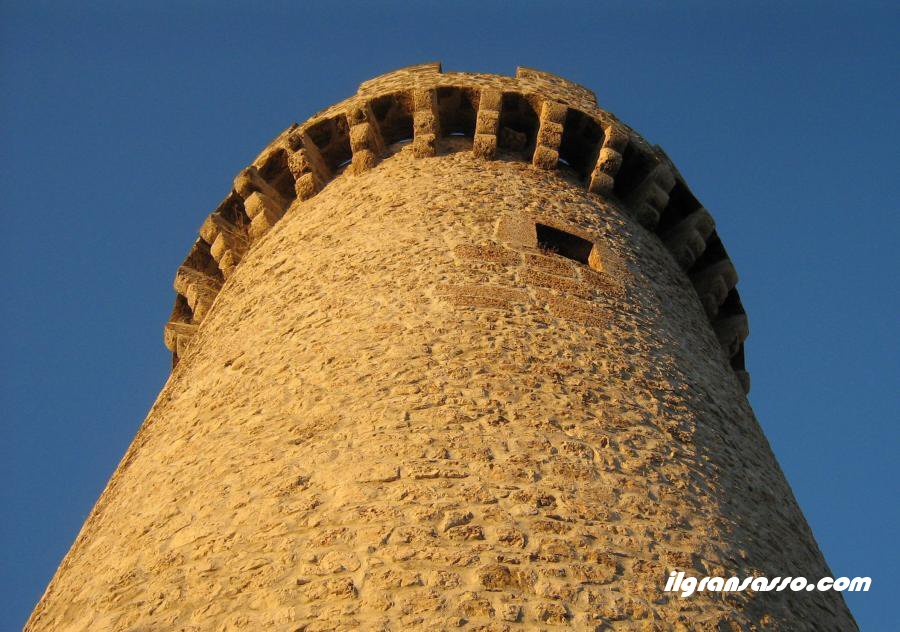
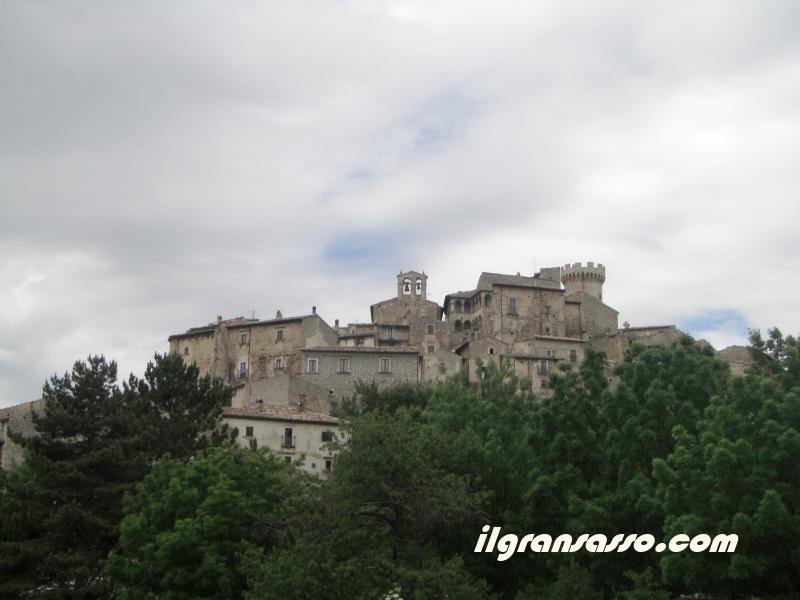
|
|
THE HORSE ROAD OF THE PARK
A long path that
allows you to know and appreciate a unique
environmental and cultural heritage along
the old paths, cart paths and unspoilt
beauty of landscapes, towns and villages,
pastures and forests of beech and oak. The
routes mainly follow the existing ones
which, for centuries, have linked villages
and towns divided by the mass of the Gran
Sasso or have always been used by farmers
to reach the fields at high altitudes.
The park has achieved a great loop around
the massif of the Gran Sasso, enriched by
a mesh of branches and shorter, for a
total of about 300 km of trails properly
restored.
The track grows on the slopes aquilano
Teramo and Pescara del Gran Sasso
d'Italia. The intervention led to the
establishment of areas to stop or step
equipped with shelters for horses, as is
the case of the complex in the town of
Knights Crognaleto, with a guest house 50
beds, a restaurant, an information point
and a barn that can accommodate up to 10
horses.
|
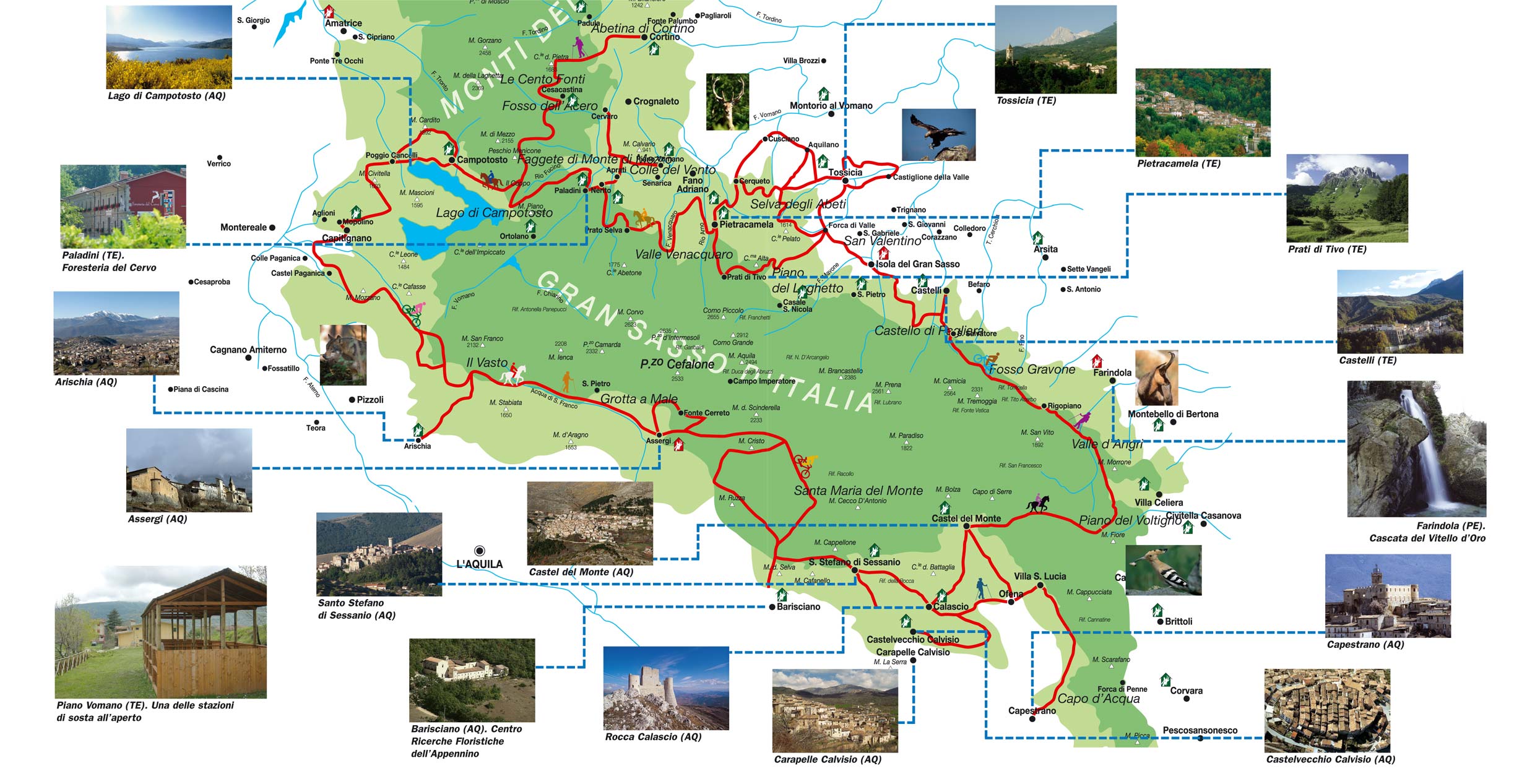
DOWNLOAD
MAP
|
|
|